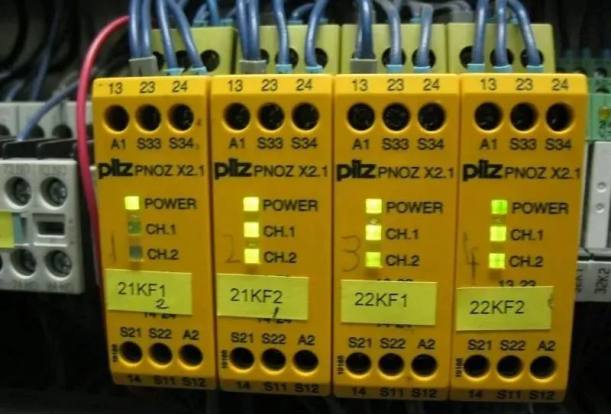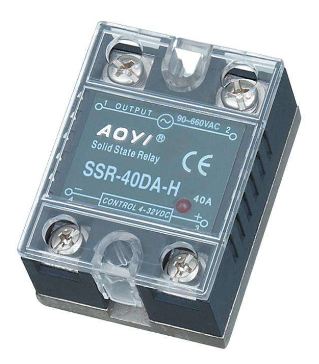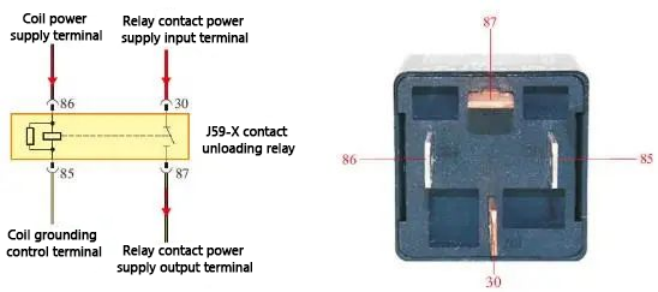
In many household appliances, relays are installed on the circuit boards to prevent excessive current from damaging the device. Relays are widely used across various fields and can be found everywhere. So, what exactly is a relay? What role does it play?
Catalog
II. Main Components and Working Principle
1. Working Principle and Characteristics of Electromagnetic Relays
2. Working Principle and Characteristics of Thermosensitive Reed Relays
3. Working Principle and Characteristics of Solid-State Relays (SSR)
III. Main Functions of a Relay
IV. Practical Applications of Relays
V. Relay Applications in Automobiles
I. What is a Relay?
A relay is an electrical control device used to control a switch in one circuit through an electromagnetic or electronic signal. It typically consists of an electromagnetic coil and one or more contacts. When current flows through the coil, it generates a magnetic field, causing the contacts to close or open, thereby controlling the flow of current in the circuit. The main function of a relay is to isolate the control part of a circuit from the part being controlled, enabling remote control, automation, current amplification, protection, and safety isolation.
II. Main Components and Working Principle
Relays can be classified into several main types based on their working principles or structural features, including electromagnetic relays, thermosensitive reed relays, and solid-state relays (SSR), among others. These types are widely used in electrical control applications, with well-known brands such as Schneider, Omron, Chint, Hongfa, and Panasonic. Relays typically come in two common types: 8-pin and 14-pin. An 8-pin relay usually features two sets of normally open contacts, two sets of normally closed contacts, and one coil contact. A 14-pin relay, on the other hand, has four sets of normally open contacts, four sets of normally closed contacts, and one coil contact.
1. Working Principle and Characteristics of Electromagnetic Relays
Electromagnetic relays consist of an iron core, coil, armature, and contact springs. When current flows through the coil, the generated magnetic field attracts the armature, overcoming the spring force and causing the movable contact (normally open) to close with the fixed contact, completing the circuit. When the power is turned off, the magnetic field disappears, and the armature is pushed back by the spring force, opening the movable contact and closing the normally closed contact, breaking the circuit. This process of attraction and release allows the relay to control the flow of current in the circuit.

2. Working Principle and Characteristics of Thermosensitive Reed Relays
Thermosensitive reed relays use thermosensitive magnetic materials to detect and control temperature. The relay consists of a temperature-sensitive magnetic ring, a permanent magnetic ring, a reed switch, a heat-conducting mounting plate, and a plastic substrate. The magnetic force generated by the permanent magnetic ring controls the magnetic properties of the reed switch through the temperature-sensitive characteristics of the magnetic ring, thereby triggering the switch operation. These relays do not require electromagnetic excitation, instead using their thermal sensitivity to achieve temperature control.

3. Working Principle and Characteristics of Solid-State Relays (SSR)
A Solid-State Relay (SSR) is an electronic switching device with input and output terminals, which are electrically isolated from each other by an isolation component. SSRs are classified into AC and DC types based on the load power source, and into normally open and normally closed types based on the switching function. They can also be categorized by isolation type, such as hybrid, transformer-isolated, and opto-isolated, with the opto-isolated type being the most common.

SSRs operate by controlling the voltage or current at the input to drive the internal semiconductor switch, thus controlling the output load circuit. Compared to traditional electromagnetic relays, SSRs have advantages such as fast response time, long lifespan, no mechanical contacts, and silent operation, making them widely used in automation systems and precision control devices.
III. Main Functions of a Relay
· Circuit Control and Isolation: A relay can control the switching of a circuit and isolate the control part from the controlled part, ensuring the safety and reliability of both the control signal and the controlled circuit.
· Current Amplification: Relays can control high current loads and amplify small current control signals, thus accommodating different load requirements.
· Remote Control and Automation: Relays can be used in remote control systems, allowing for remote operation of equipment or systems.
· Protection: Relays provide protective functions, such as overload and short-circuit protection. When the load exceeds the set value, the relay can quickly disconnect the power supply, preventing damage to the circuit or device.
· Signal Conversion and Logic Control: Different types of relays can achieve signal conversion, logic control, and timed control, providing complex electrical control functions.
IV. Practical Applications of Relays
Relays are widely used in various fields such as transportation, automotive, aviation, electronics, household appliances, industrial automation systems, power systems, and communication devices. For example, in household appliances like air conditioners, washing machines, and refrigerators, relays are often used to control the switching of circuits and protect devices from overcurrent damage. In industrial automation, control systems rely on relays to perform complex control and protection functions.
V. Relay Applications in Automobiles
Relays are widely used in automobiles. For example, the following diagram shows an X-point unloading relay used in a Volkswagen car. The "30" terminal is the power input for the relay contacts, the "87" terminal is the power output for the relay contacts, the "86" terminal powers the coil, and the "85" terminal is the coil ground.

When the relay coil is energized, current flows through terminals "86" and "85," energizing the coil. The magnetic force generated by the coil attracts the contacts, causing the connection between terminals "30" and "87."
When the coil is de-energized, the magnetic force disappears, and the spring force pushes the contacts back to their original position, disconnecting the connection between terminals "30" and "87."
Overall, relays play a crucial role as a key component in the field of electrical control. Their design and application are of significant importance in both modern life and industrial production.




